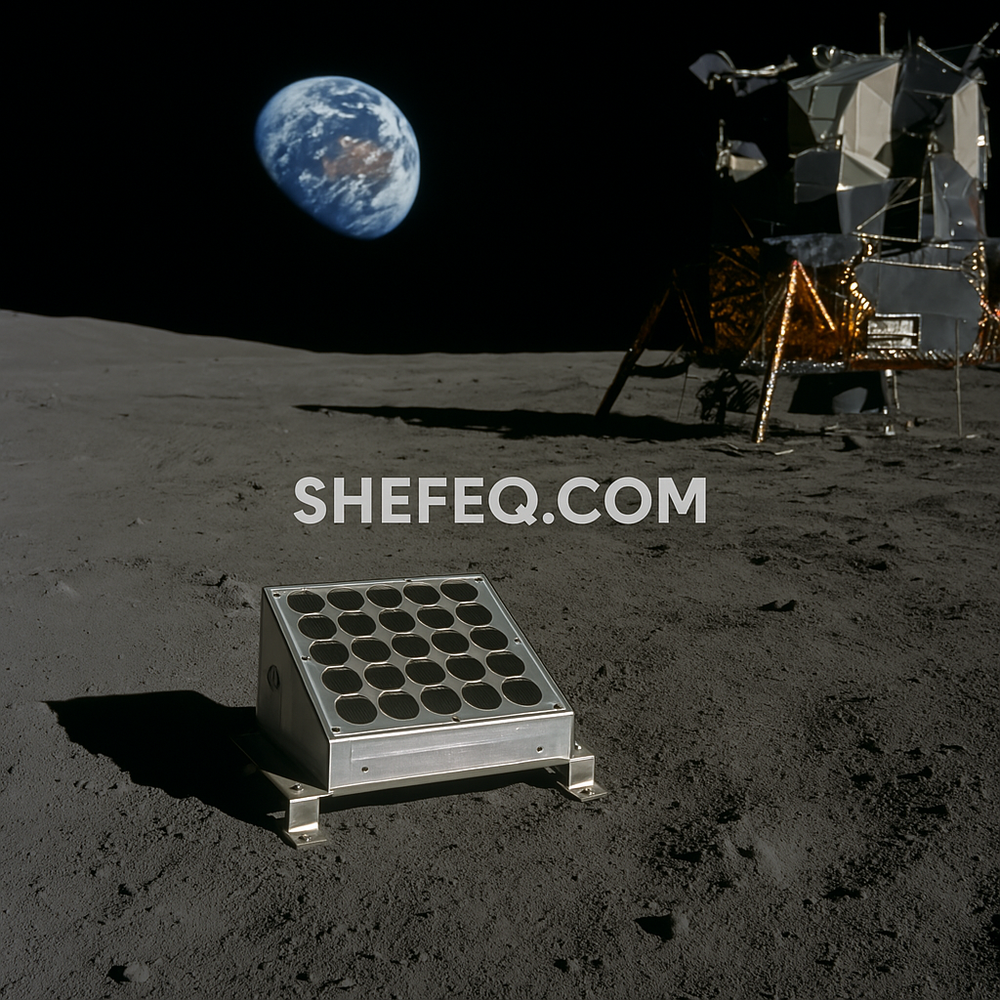INTRODUCTION: SILENCE LEFT ON THE MOON When humanity stepped onto the Moon, it left behind more than just a footprint in the dust — it left a philosophical imprint as well. In July 1969, the Apollo 11 mission marked the beginning of a new era. The phrase "That's one small step for man, one giant leap for mankind" became iconic. But the legacy of this mission was not just photos — it included devices, experiments, and yes, one mirror.
This article explores NASA's scientific experiments on the Moon, the instruments still functioning today, and especially the forgotten retroreflector.
I. The Silent Witness of the Moon: What Is a Retroreflector? One of the most peculiar yet scientifically crucial objects left by NASA on the Moon is the retroreflector:
-
It’s an optical device that reflects laser beams back to the point of origin.
-
This allows extremely precise measurements of the Earth-Moon distance (to the millimeter).
-
The first mirror was placed by Neil Armstrong and Buzz Aldrin (Apollo 11, 1969).
-
More powerful systems were added later by Apollo 14 and 15 missions and by Soviet Lunokhod rovers.
II. NASA Instruments Left Behind on the Moon Apollo missions brought not only humans but also dozens of scientific instruments, some of which:
-
Still transmit data today.
-
Examples:
-
PSEP – to measure moonquakes
-
Lunar Dust Detector – to monitor lunar dust movement
-
LRRR – the retroreflector in focus
-
Laser communication systems between Earth and Moon
-
III. The Mirror That Speaks to Earth Through these mirrors:
-
Lasers sent from Earth return in about 2.5 seconds.
-
The Earth-Moon distance is increasing by about 3.8 cm per year.
-
This data continues to confirm Einstein's General Theory of Relativity.
-
NASA has been conducting these measurements for over 50 years, proving the equipment’s longevity.
IV. The Fate of Lunar Remnants – Trash or Treasure? Some consider these objects as "space junk," but they:
-
Hold historical, cultural, and philosophical value
-
Include: lower module parts, used containers, flags (faded and damaged), gloves, boots, cameras, and even astronaut waste
V. Moon Dust – A Quiet but Dangerous Threat
-
The surface is covered in ultra-fine, sharp particles
-
Dust accumulation reduces mirror reflectivity
-
After 2009, reflectivity reportedly dropped by 20–30%
-
NASA observed dust rising electrostatically due to the Moon’s lack of atmosphere
VI. Ongoing Mission: Daily Laser Measurements
-
Observatories like Apache Point in California send daily laser pulses to the Moon
-
The mirrors reflect them back
-
This data helps:
-
Track gravitational fluctuations
-
Monitor the Moon’s orbit
-
Aid in climatology, time measurement technologies, and secure communications
-
VII. The Philosophy of the Retroreflector – Dialogue Between Silence and Science
-
More than just a tool, it’s a symbol of humanity’s will
-
A bridge between quiet space and active Earth
-
Proof of mankind’s desire to remain present on the Moon
-
It stands silently — a timeless observer
VIII. Looking Ahead: New Mirrors and New Missions
-
NASA and other agencies plan missions with new retroreflectors
-
Artemis mission aims to send the first woman and next astronauts to the Moon
-
Future mirrors will support lunar base navigation and communication
-
Some plans involve using mirrors to guide robotic movement on the Moon
CONCLUSION: NOT JUST A MIRROR, BUT A MEMORY The Moon’s mirror is not just an optical device. It’s a symbol of determination, technology, and endless belief in science.
It still stands — gazing at Earth. And perhaps, while we often look at the Moon, we forget that something is still looking back.

